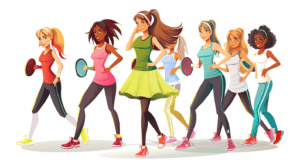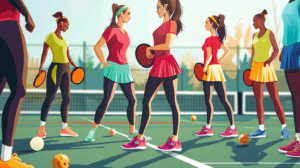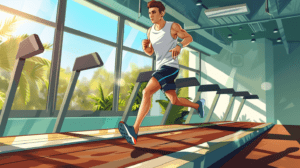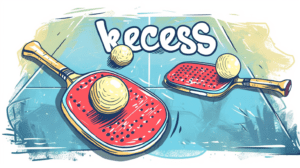How Should Pickleball Shoes Fit?

Last updated
If you’re stepping onto the pickleball court, you know the right shoes make all the difference. But, how should pickleball shoes fit? Let’s jump right in.
So How Should It Fit?
Pickleball shoes should hug your feet like a cosy winter glove—snug but not cramped. Your toes need freedom to wiggle, and a small gap at the heel is crucial to avoid any irritating rubs.
You’ll want about a thumb’s width of room between your longest toe and the tip of your shoe. This space isn’t just for comfort; it’s essential for proper movement and protects your toes during those quick stops and starts.
Too tight? Your feet will feel it after a few games. If you have wide feet, ensure your pickleball shoes are spacious enough to prevent unwanted squeezes and maintain balance to keep you upright and ready for action.
Head to a specialist store for the best fit. Experts measure your feet precisely, consider your playing frequency, and guide you to the perfect size and width, especially if you need pickleball shoes for wide feet.
Spend the time to find your ideal pair, and your feet will thank you later.
Understanding Different Types of Pickleball Shoes
Indoor vs Outdoor Shoes
Where you play dictates the kind of shoes you need. Indoor shoes are great for hardwood or laminate floors, offering the necessary grip and support while being gentle on indoor surfaces.
For playing on asphalt or concrete, you’ll need special shoes for pickleball that are built tough with rugged outsoles designed to handle the harsher elements of outdoor play.
Sole Types & Durability
The soles are crucial. Indoor shoes typically have softer outsoles to minimize damage to courts and provide smoother play.
Outdoor shoes feature harder soles that endure the rougher conditions of outdoor courts.
When shopping, consider the sole that matches your court type. Durable soles translate to long-lasting comfort and support.
Getting the Right Fit
First, measuring your foot correctly is the starting point for a good shoe fit. Stand on a piece of paper and trace around your foot.
Please measure the length and width of this tracing and compare it with a shoe size chart. Keep in mind that sizes can vary between brands.
Customization for Comfort
Not all shoes will fit perfectly off the shelf, but here’s the good news: You can customize! Many shoes come with removable insoles, allowing you to insert ones that better meet your needs.
The right insoles, whether enhanced arch support or extra cushioning, can transform your shoe fit.
Lacing systems are also adaptable. Experiment with different tying techniques to find what feels best, or switch to lace-free shoes for a quick, snug fit.
Adjusting your shoes can drastically improve comfort and support, enhancing your performance on the court.
For more specific guidance, see our comparison of pickleball shoes vs tennis shoes and their adaptability features.
Factors Impacting Shoe Fit
Several factors influence how well your shoes will fit. Consider your foot shape and specific conditions like flat feet or plantar fasciitis. Choose shoes that address these concerns.
The type of socks you wear also plays a role. Opt for moisture-wicking socks to keep dry or padded socks to prevent blisters.
New shoes often require a break-in period. Wear them around the house to speed up this process, ensuring they mould to your feet for maximum comfort.
Trying on Shoes: Best Practices
The best time to shoe shop? Late in the day when your feet are largest. Wear the socks you’ll play in to get the most accurate fit.
Test the shoes by walking and mimicking pickleball moves. Check for a snug fit without tightness, ample toe room, and solid heel support.
Ensure the shoes don’t pinch or rub and offer sufficient arch support and cushioning. The front should flex easily but remain stable in the middle.
Take your time, and don’t hesitate to consult a shoe expert. The right pair of shoes will feel great and support your feet, letting you focus on enjoying the game.







